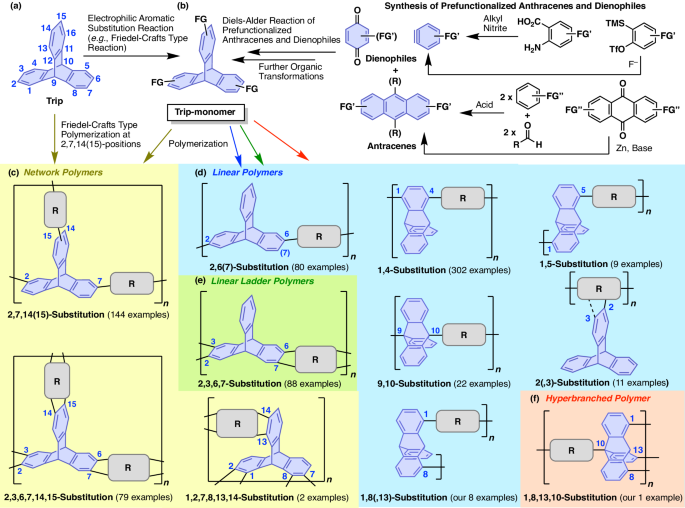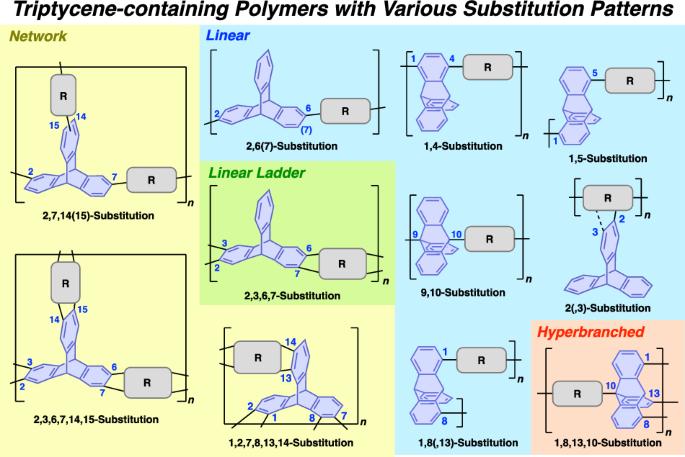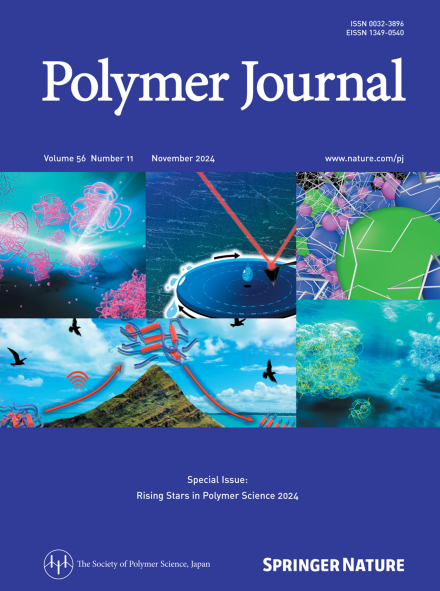结构复杂的三庚烯、含三庚烯聚合物和组装体的最新进展:结构、功能和应用
IF 2.3
4区 化学
Q3 POLYMER SCIENCE
引用次数: 0
摘要
三庚烯是一种坚硬的螺旋桨形分子,于 20 世纪 40 年代初首次合成。最近,许多含三庚烯的聚合物和分子组合体被开发出来,应用领域十分广泛,包括客体识别、材料运输、分离、催化以及作为设备元件。三庚烯的优势在于它们能够在三维骨架上引入各种官能团,取代模式和取代基类型的变化对材料特性有重大影响。在本综述中,我们介绍了三庚烯衍生物和聚合物的合成,并详细列举了一些含三庚烯功能聚合物的实例。我们还重点介绍了基于三庚烯的二维组装体和聚合物的构建,其中基于刚性螺旋桨形骨架的空间填充设计至关重要。通过详尽的文献调查,我们讨论了含三庚烯功能材料的未来发展方向和可能性。本文章由计算机程序翻译,如有差异,请以英文原文为准。


Recent advances in structurally elaborate triptycenes, triptycene-containing polymers and assemblies: structures, functions and applications
Triptycene, a rigid propeller-shaped molecule, was first synthesized in the early 1940s. More recently, many triptycene-containing polymers and molecular assemblies have been developed for a wide range of applications, including guest recognition, material transport, separation, catalysis, and as device components. The advantages of triptycenes lie in their ability to introduce a variety of functional groups on their three-dimensional backbone, with changes in substitution patterns as well as the type of substituents present having a significant impact on the material properties. In this review, we describe the synthesis of triptycene derivatives and polymers, detailing selected examples of triptycene-containing functional polymers. We also focus on the construction of triptycene-based two-dimensional assemblies and polymers, where space-filling designs based on rigid propeller-shaped skeletons are essential. Through a thorough literature survey, future directions and possibilities for the development of triptycene-containing functional materials are discussed. Triptycene-containing polymers featuring a rigid propeller-shaped structure have attracted attention for a wide range of potential applications including guest recognition, material transports, separations, catalysis, and organic electronics. Herein, with a thorough literature survey, we present the synthesis of the various types of triptycenes that provide components for functional polymers. We particularly focus on triptycene-containing polymers and two-dimensional assemblies based on the space-filling design that uses nested packing. Future perspectives on the functionalities brought about by the design of triptycene-containing polymers and molecular assemblies are also discussed.
求助全文
通过发布文献求助,成功后即可免费获取论文全文。
去求助
来源期刊

Polymer Journal
化学-高分子科学
CiteScore
5.60
自引率
7.10%
发文量
131
审稿时长
2.5 months
期刊介绍:
Polymer Journal promotes research from all aspects of polymer science from anywhere in the world and aims to provide an integrated platform for scientific communication that assists the advancement of polymer science and related fields. The journal publishes Original Articles, Notes, Short Communications and Reviews.
Subject areas and topics of particular interest within the journal''s scope include, but are not limited to, those listed below:
Polymer synthesis and reactions
Polymer structures
Physical properties of polymers
Polymer surface and interfaces
Functional polymers
Supramolecular polymers
Self-assembled materials
Biopolymers and bio-related polymer materials
Polymer engineering.
 求助内容:
求助内容: 应助结果提醒方式:
应助结果提醒方式:


